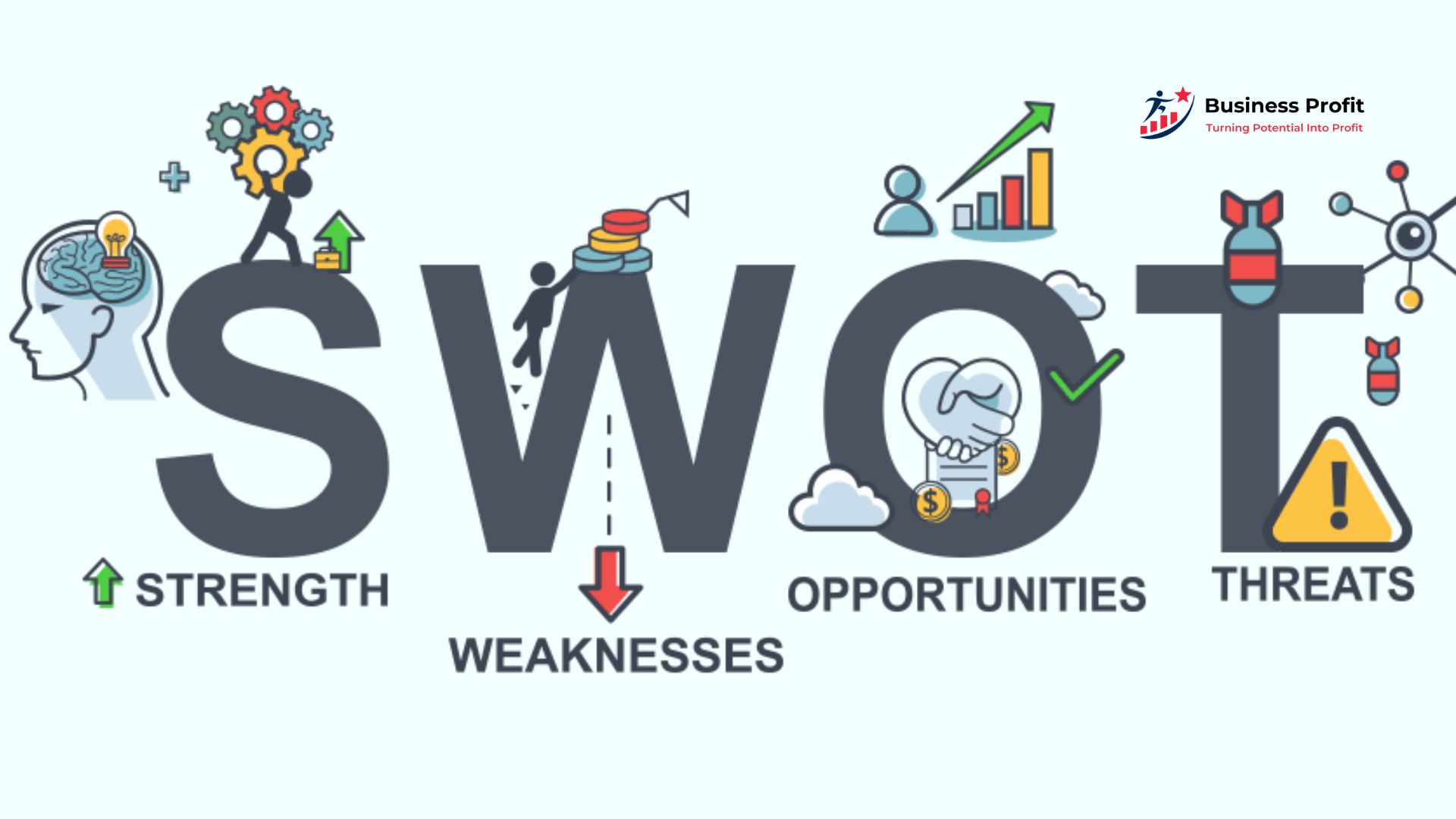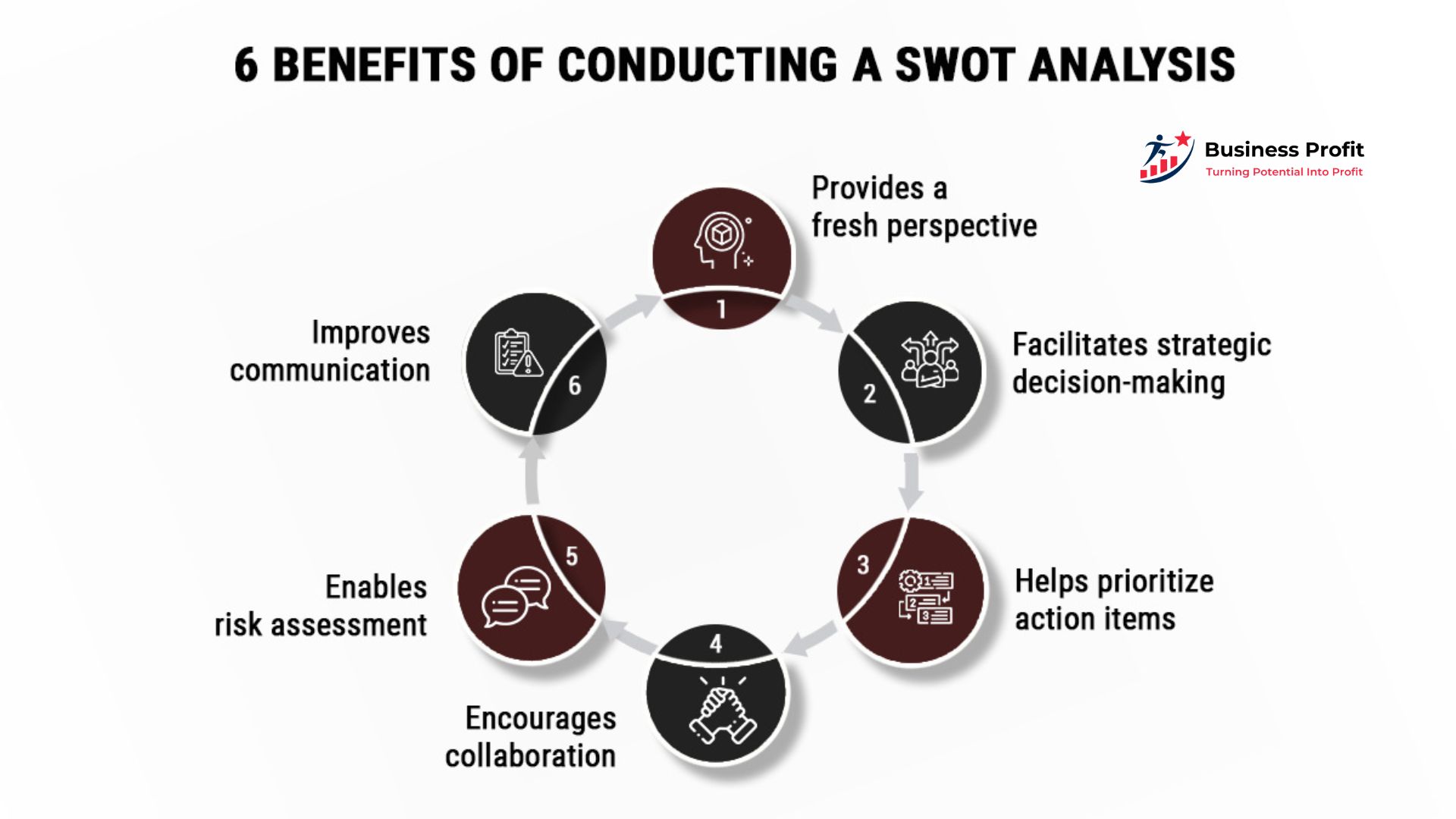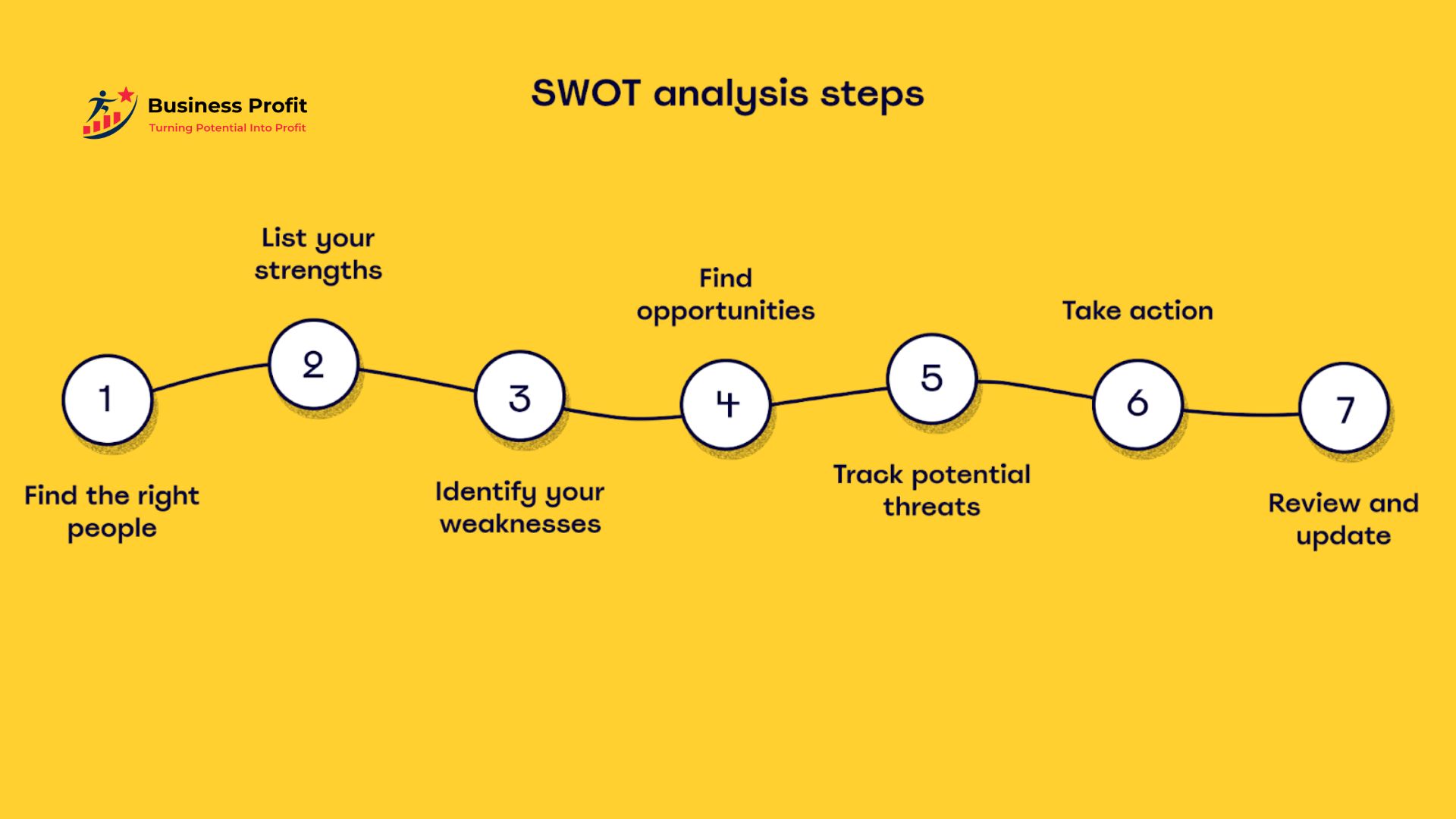
Imagine you’re a captain setting sail on a vast ocean. You have a sturdy ship, a skilled crew, and a treasure map guiding your way. But even the most prepared voyage can encounter unexpected storms and hidden reefs. To navigate these challenges successfully, a captain relies on a well-charted course and a keen understanding of their vessel’s strengths and weaknesses. In the world of business, a SWOT analysis serves a similar purpose. It’s a strategic planning tool that equips you to navigate the ever-changing market landscape. Finding your SWOT (Strengths, Weaknesses, Opportunities, and Threats) gives you a clear picture of what your business can do and how it works in the outside world.
What is a SWOT Analysis?
A SWOT analysis is an organized way to look at the state of a business. It’s a two-by-two grid that categorizes factors into internal and external aspects:
- Internal Factors: These are elements within your control, such as your company’s resources, skills, and processes.
- Strengths: These positive attributes give your business a competitive edge.
- Weaknesses: These are the internal limitations that hinder your performance.
- External Factors: These are outside your control, such as market trends, competition, and economic conditions.
- Opportunities: These external elements present favourable conditions for your business growth.
- Threats are outside factors that can make things complicated or dangerous for your business.
By analyzing these four elements, you comprehensively understand your business’s current standing and future trajectory.
Benefits of Conducting a SWOT Analysis

A SWOT analysis offers many benefits for businesses of all sizes and sectors. Here’s a closer look at some key advantages:
1. Enhanced Self-Awareness
A SWOT analysis compels you to take a critical yet objective look at your business. It encourages you to identify not just your strengths but also your weaknesses. This self-awareness allows you to:
- Leverage your strengths: By recognizing your unique strengths, you can capitalize on them to differentiate yourself from competitors.
- Address your weaknesses: Identifying weaknesses allows you to develop strategies to mitigate their impact and invest in areas that need improvement.
For example, a restaurant owner conducting a SWOT analysis might discover that their delicious recipes are a strength while a limited marketing budget is a weakness. This awareness empowers them to explore cost-effective marketing strategies to attract new customers.
2. Improved Strategic Planning
It would help to start with a SWOT analysis to make a good business plan. By understanding your internal capabilities and external environment, you can:
- Set realistic goals: By considering your strengths and weaknesses, you can set achievable goals that leverage your advantages and address your limitations.
- Develop targeted action plans: Analyzing opportunities and threats allows you to create specific action plans to capitalize on favourable conditions and mitigate potential risks.
For instance, a clothing company might identify a growing demand for eco-friendly fashion (opportunity) and a rise in cotton prices (threat) through a SWOT analysis. This can lead them to develop a strategy to source sustainable materials while optimizing production costs.
3. Increased Market Competitiveness
A well-conducted SWOT analysis equips you with valuable insights into your competitive landscape. You can:
- Identify your competitive edge: By understanding your strengths and how they stack against your competitors, you can position yourself more effectively in the market.
- Develop strategies to counter threats: Finding possible threats lets you make plans ahead of time to lessen their effects and stay ahead of the competition.
Imagine a software company conducting a SWOT analysis. They discover their user-friendly interface is a strength, while a lack of mobile apps is a weakness. Additionally, they identify the emergence of new competitors as a threat. This awareness allows them to prioritize mobile app development while marketing their strengths to stay ahead of the competition.
4. Fosters Teamwork and Communication
Conducting a SWOT analysis is often a collaborative exercise. It encourages:
- Open communication: Team members can talk about what they think are the company’s chances, threats, weaknesses, and strengths.
- Teamwork and brainstorming: Working together in a group leads to creative solutions for problems and ways to take advantage of chances.
This way of working together can make the analysis more thorough and give team members a better sense of ownership when implementing the strategies they’ve come up with.
Conducting a SWOT Analysis: A Step-by-Step Guide

Now that you understand the benefits of a SWOT analysis let’s explore how to conduct one effectively:
- Gather Your Team: Assemble a team with diverse perspectives from different departments within your business. This could include marketing, sales, operations, finance, and even customer service representatives.
- Set a Clear Objective: Define the specific purpose of your SWOT analysis. Are you evaluating your overall business strategy, launching a new product line, or entering a new market? A clear objective helps guide the discussion and ensures the analysis remains focused.
- Brainstorm and Analyze: Dedicate time for open brainstorming. Tell everyone on the team what you think about all four of the SWOT factors:
- Strengths: Consider your company’s resources, skills, experience, brand reputation, customer loyalty, technological advancements, unique products or services, and any other positive attribute that gives you an edge.
- Weaknesses: Be honest about your limitations. This could include lack of experience in a particular area, limited resources, outdated technology, high employee turnover, or weaknesses in marketing or sales strategies.
- Opportunities: Look for things outside your business that could improve it. This might include emerging market trends, potential partnerships, changes in customer preferences, or economic factors that create a favourable environment for your industry.
- Threats: Identify external challenges that could hinder your growth. Consider factors like new competitors, technological disruptions, economic downturns, changes in government regulations, or potential supply chain disruptions.
- Prioritize and Organize: Once you have a comprehensive list of factors under each category, prioritize them based on their significance. For strengths and weaknesses, focus on the most impactful elements that will influence your business. For opportunities and threats, consider the likelihood of them occurring and their potential impact.
- Action Planning: Translating your SWOT analysis into actionable strategies is the most crucial step. Develop plans to:
- Leverage your strengths: Identify ways to capitalize on your strengths to achieve your goals.
- Address your weaknesses: Develop strategies to improve or mitigate their impact.
- Capitalize on opportunities: Create plans to exploit favourable external conditions and seize new opportunities.
- Counter threats: Develop proactive strategies to minimize the impact of potential threats.
A SWOT analysis is a vital tool that helps businesses make intelligent choices, deal with problems, and take advantage of chances. Giving a thorough SWOT analysis some of your time can help you learn valuable things to help your business succeed in the long run.
Ready to take your business to the next level?
Explore our range of services at Business profit, designed to enhance your business performance. From strategic analysis to marketing, we provide the tools and expertise you need to achieve your business goals.
